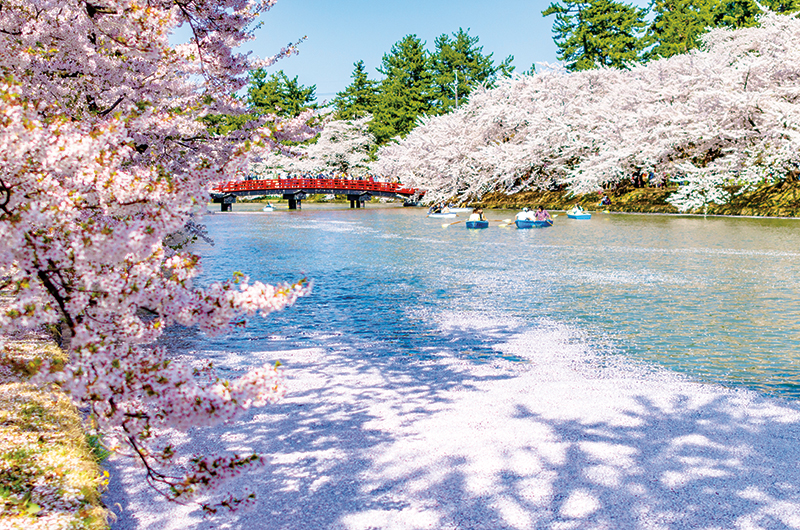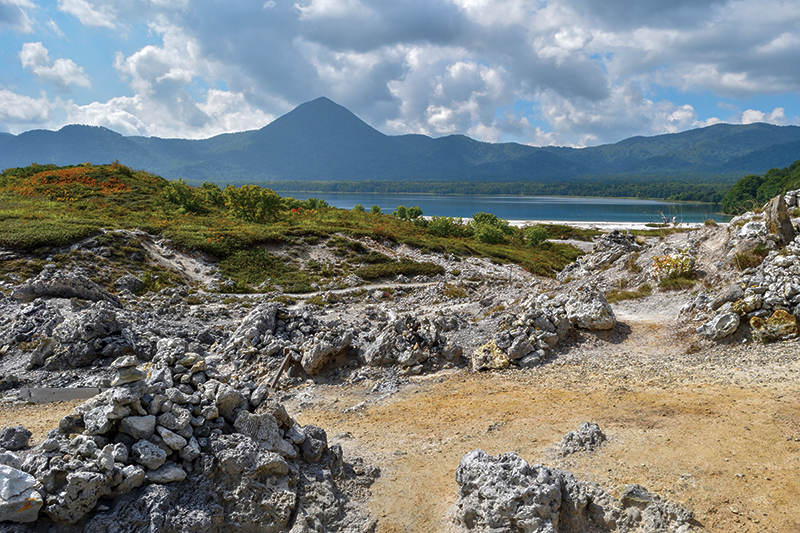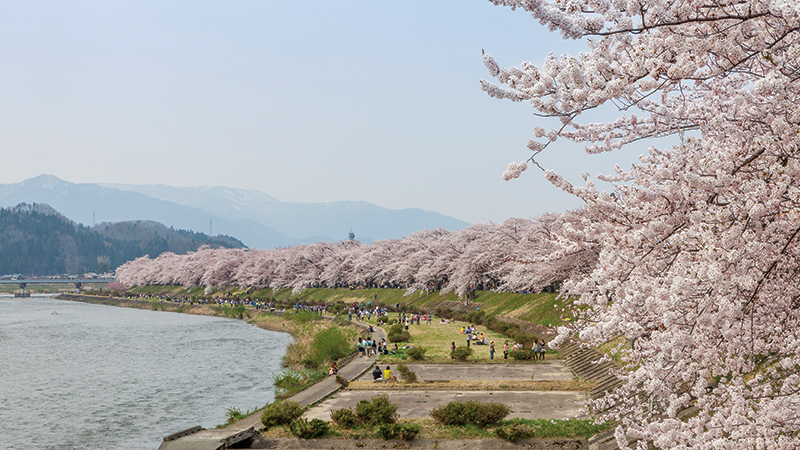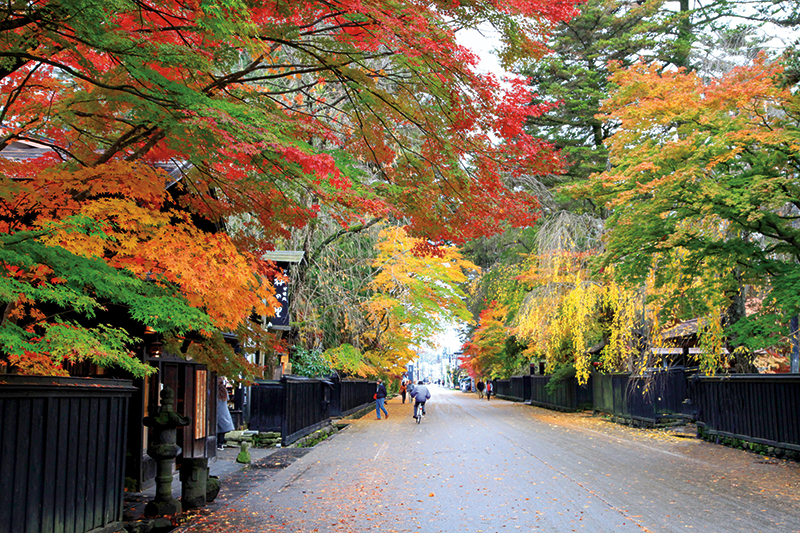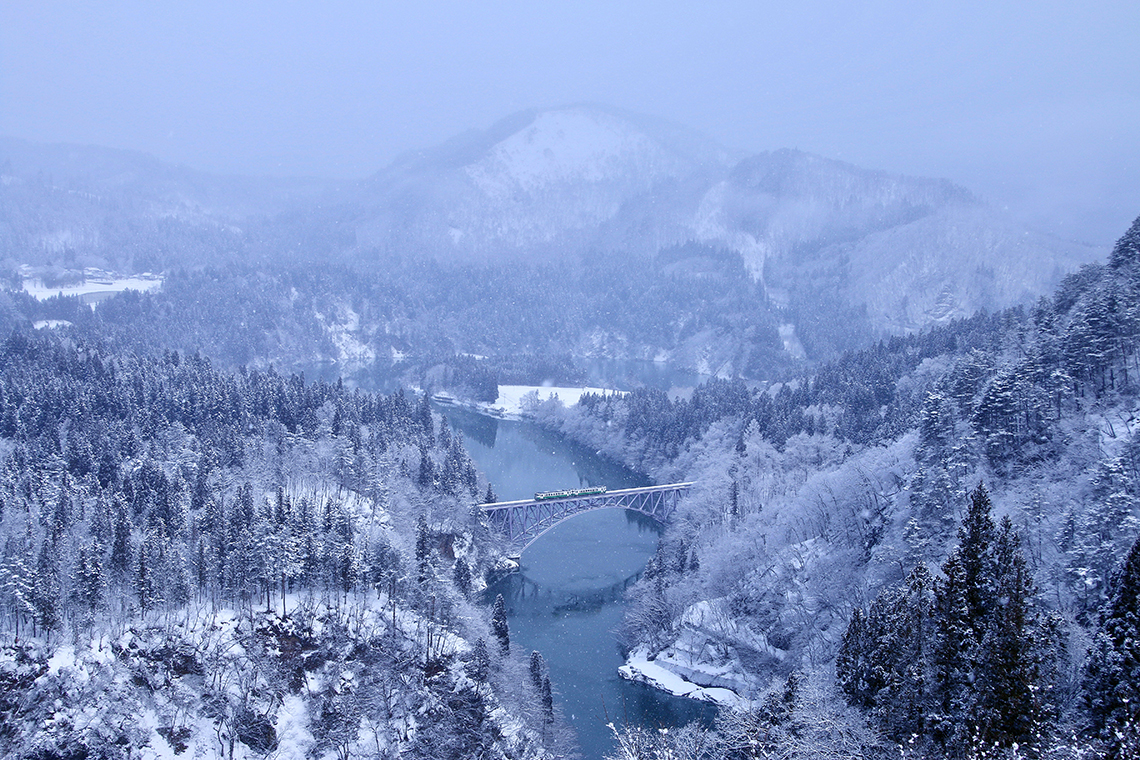
Snow-capped mountains zip by the bullet train as you leave Tokyo. The landscape slowly morphs from towering cityscapes and skyscrapers into lush green rolling hills and rice paddies. The blaring neon hustle and bustle of the world’s largest metropolitan area melts into the simplicity and tranquility in the northernmost reaches of Japan.
The Tohoku region – literally “The Northeast” – lies on the main island of Honshu, the largest island of the archipelago of Japan. The region consists of six prefectures, or states. This area of Japan is known for its large number of hot springs, mountainous terrain, delicious rice and sake. A spine of mountains divides the island in half, and the region was historically considered remote and hard to travel to until the advent of trains. So agriculture became its lifeblood during the Edo period.
Winter is long and harsh here. Snowfall is heavy. But this helps with one of the region’s most famous products – traditional Japanese rice wine, or sake.
The French speak of terroir, “a sense of place,” which influences the taste of wine. Geography and climate also have effects on sake. When you drink sake that was produced in the Tohoku region, the flavors are more pronounced. Sake is heavily influenced by the colder temperatures – it affects the taste, the speed of the fermentation and production process.
Every year, Japan’s National Research Institute of Brewing holds a competition where hundreds of sake brands bring their best to be rated and critiqued. In 2016, more than half of the gold medals were awarded to the sake breweries located in the Tohoku region.
The town of Kakunodate is located in the heart of Akita prefecture; it is referred to as “The Little Kyoto of the Northeast.” The Hinokinai River is a picturesque river that gently winds through town, the embankment lined with weeping cherry blossom trees, which are exceptionally beautiful in late April. From the historic neighborhood of Kakunodate, you can walk a mile along the Hinokinai riverbank and gaze at the hundreds of somei-yoshino cherry trees that were planted in honor the Emperor Akihito in 1934. When the second lord of Kakunodate, Yoshiaki Satake, married a woman from an aristocratic family from Kyoto, part of her dowry was three weeping cherry blossom saplings. There are now close to 400 cherry blossom trees in and around the samurai district, many of which are more than 300 years old.
The Asakura or Ryugasaki Castle ruins are found on top of Furushiroyama Hilltop in Kakunodate; the castle was razed to the ground in the early 17th century, but there are preserved samurai and merchant homes all within walking distance of each other. A craft that intertwines the history of samurai and cherry blossoms together is the traditional technique of kabazaiku, cherry blossom bark whittling and shaping, an art form that originates from Kakunodate. Originally, kabazaiku was taught to the lower-level samurai that served the Satake family as a secondary source of income. The bark is harvested from wild cherry trees in late summer and early fall, right after the region’s rainy season. The moisture makes the harvesting process much easier. The beauty of this ancient craft is that only a small amount of bark is taken from each tree, so it will not cause any damage to the tree. Buddhist philosophy teaches you to live alongside nature without exploiting it.
As you head north by northeast from Kakunodate, you travel through Iwate prefecture into Aomori – the northernmost prefecture on the main island of Honshu.
Shimokita Hanto is a hatchet-shaped peninsula that juts out into the Pacific Ocean and the Tsugaru Straits that separate Aomori prefecture from the island of Hokkaido. The peninsula itself has very limited public transportation. There is one perimeter road that circumvents the landmass. Driving is highly recommended if you plan on sightseeing in this remote location.
As you emerge from a meandering mountain road that winds through the wilderness, a giant lake appears on the horizon and the smell of sulphur permeates the air. The orchestra of cicada that serenaded you as you drove through the winding, mountainous path stops abruptly. Before you is Osorezan, “the mountain of fear.”
The Buddhist temple sits on the ledge of an active volcano. Everywhere you look, you see signs of how truly active this volcanic region is – fumaroles vigorously expel steam, ponds bubble with methane. This otherworldy environment with charred and blasted rocks is considered to be the entrance to Hell.
As you drive towards the temple, you pass the Sanzu River. In Buddhist teachings, it’s the equivalent to the River Styx – you cross it, then you are stripped naked and your sins are weighed.
Modern visitors will be relieved to learn this Buddhist teaching is not enforced literally today.
Beyond, the waters of Lake Usori are so acidic that the caldera harbors no life. Signs for mamushi, Japanese pit vipers, are posted everywhere. Forty-eight stone lanterns line the path to the temple; two small canals on either side of the walkway are bright yellow or green and bubble effervescently. There are giant cairns with pinwheels, and five-yen coins that have been completely melted or oxidized by the environment or miniature Buddha figures line the bottom of the rock piles.
With the unsettling quietness that this moon-like landscape provides, it truly feels like some mystical power is at work.
Southwest of Osorezan’s Shimokita Peninsula, the Takayama Inari Shrine was built for the deity of rice and sake. However as agriculture became a less of a priority in Japanese life, Inari became more of a symbol of prosperity and success.
Kyoto has a shrine to Fushimi Inari as well; however this lesser known one is just as beautiful. The gates wind back and forth like a dragon or serpent in motion. At the top of the hill is an altar dedicated to Inari’s guardians.
Foxes are the devoted messengers for Inari, and stone foxes – some three feet tall, some just a few inches – decorate the temple grounds. Many are cracked or broken; after protecting temples all across Japan, cracked or broken statues are sent to Takayama to retire.
The Tohoku region has wondrous natural beauty: the imposing mountain ranges that cleave the region in half, the Sea of Japan’s constant barrage against the strikingly beautiful sea cliffs, forests of virginal beech trees and the endless fields of rice paddies being worked by their caretakers.
It can seem remarkable, in this place, to think that the flashing neon lights and constant buzz of Tokyo is just a three-hour train ride away. No matter which season you find yourself visiting, it will always take your breath away.


